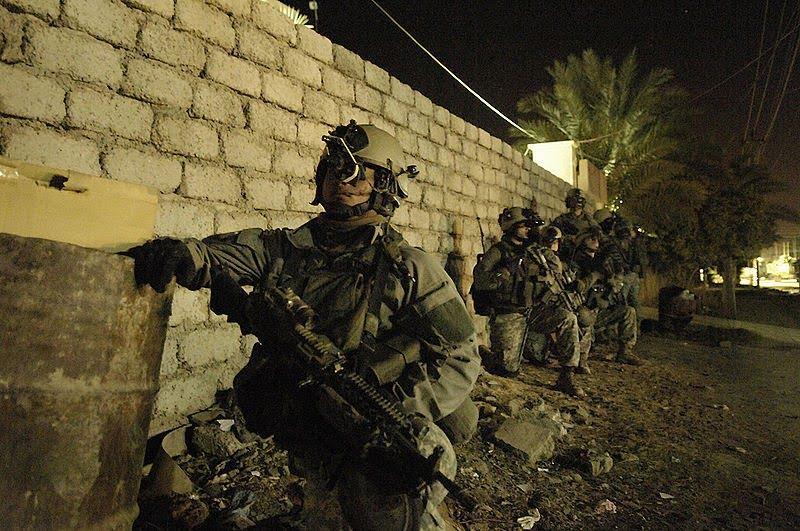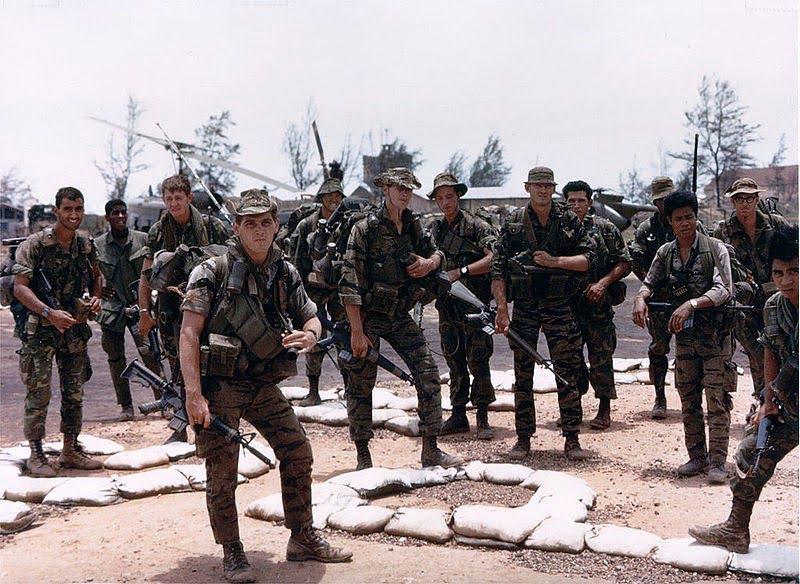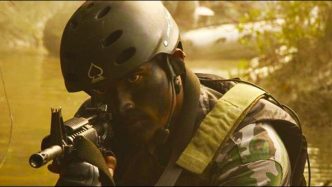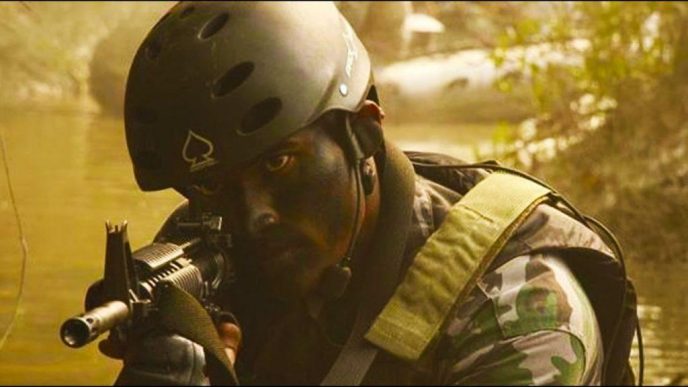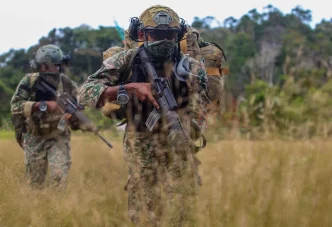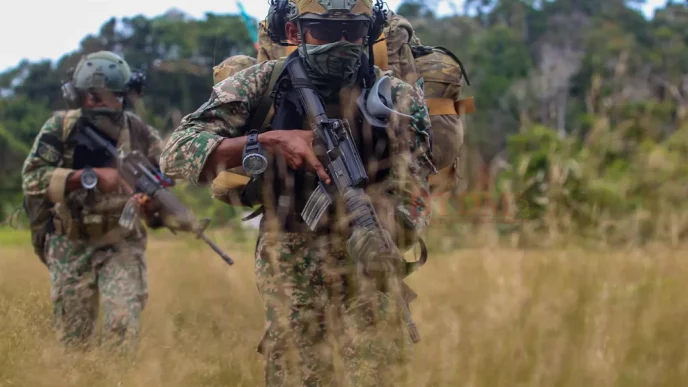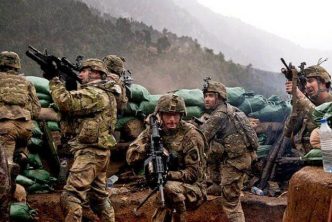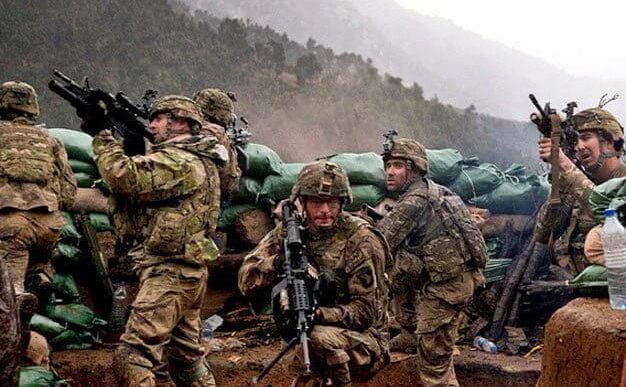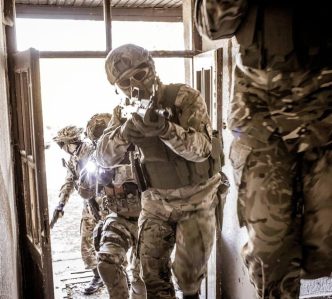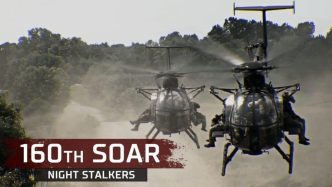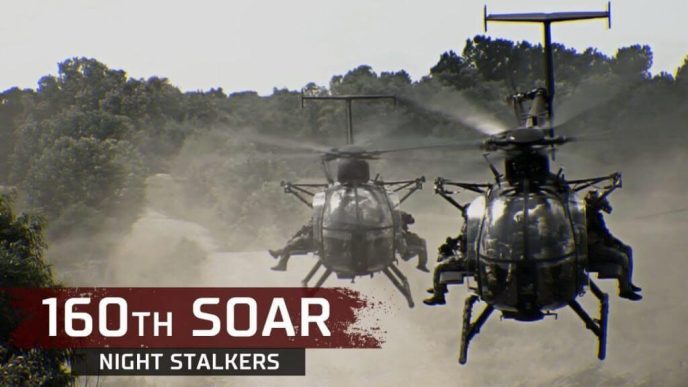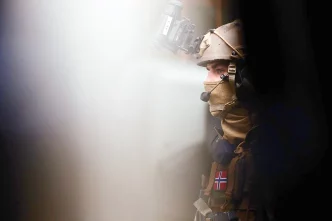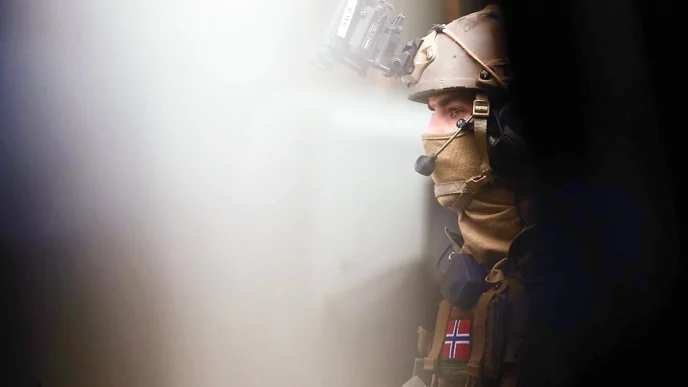The 75th Ranger Regiment, also referred to as the Rangers or Task Force Red within JSOC, is a light infantry special operations unit of the United States Army. The Regiment is headquartered at Fort Benning, Georgia, and comprises one special soldier’s Battalion and three ranger battalions.
Introduction
The 75th Ranger Regiment is considered the U.S. Army’s elite raid force, known for its specialized capabilities that enable it to undertake a wide range of missions. These include direct action, airfield seizure, airborne and air assaults, special reconnaissance, personnel recovery, and high-value target raids. Operating under the United States Army Special Operations Command, the Regiment serves as a special operations force and is considered a Tier 2 unit.
History
The origins of the Ranger units can be traced back to the pre-Revolutionary War period. In the mid-1700s, Captain Benjamin Church and Major Robert Rogers formed Ranger units to fight during the King Phillips War and the French and Indian War. Major Robert Rogers also wrote the 19 standing orders that are still in use today by the Ranger units.
During the Revolutionary War, the Continental Congress formed eight companies of expert riflemen in 1775. In 1777, this force of frontiersmen, commanded by Dan Morgan, was known as The Corps of Rangers. Another famous Revolutionary War Ranger element, Marion’s Partisans, was organized by Francis Marion, “The Swamp Fox.”
During the War of 1812, companies of United States Rangers were raised from among the frontier settlers as part of the regular Army. They patrolled the frontier from Ohio to Western Illinois on horseback and by boat throughout the war. They participated in many skirmishes and battles with the British and Indian allies. Notable figures who belonged to Ranger units during the 18th and 19th centuries include Daniel Boone and Abraham Lincoln.
The Civil War also included notable Rangers such as John Singleton Mosby, the most famous Confederate Ranger. His raids on Union camps and bases were so effective that part of North-Central Virginia soon became known as Mosby’s Confederacy.
After the Civil War, more than half a century passed without military Ranger units in America. However, during World War II (1941-1945), the United States activated six Ranger infantry battalions, using British Commando standards as a model.
The 1st Ranger Battalion was organized and activated on June 19, 1942, by Major (later Brigadier General) William O. Darby at Carrickfergus, Northern Ireland. The 1st Ranger Battalion participated in the North African landing at Arzew, Algeria, the Tunisian Battles, and the crucial Battle of El Guettar.
The 3rd and 4th Ranger Battalions were activated and trained by Colonel Darby in Africa towards the end of the Tunisian Campaign. The 1st, 3rd, and 4th Battalions formed the Ranger Force. They began the tradition of wearing the scroll shoulder sleeve insignia, officially adopted by today’s Ranger battalions.
The 2nd and 5th Ranger Battalions participated in the D-Day landings on June 6, 1944, at Omaha Beach, Normandy. During the intense fighting along the beaches, the Rangers earned their motto, “Rangers, lead the way!” They conducted daring missions, including scaling the cliffs of Pointe Du Hoc, overlooking Omaha Beach, to destroy German gun emplacements trained on the beachhead.
The 6th Ranger Battalion operated in the Philippines and formed the rescue force that liberated American prisoners of war from a Japanese POW camp at Cabanatuan in January 1945. The 6th Battalion destroyed the Japanese POW camp and evacuated more than 500 prisoners.
The 75th Infantry Regiment was first organized in the China-Burma-India Theater on October 3, 1943, as Task Force Galahad. During the campaigns in the China-Burma-India Theater, the Regiment became known as Merrill’s Marauders after its commander, Major General Frank D. Merrill. The Ranger Battalions were deactivated at the close of World War II.
With the outbreak of hostilities in Korea in June 1950, the need for Rangers was again recognized. Fifteen Ranger Companies were formed during the Korean War. The Rangers went to battle throughout the winter of 1950 and 1951. They served as nomadic warriors, attached first to one Regiment and then to another, performing tasks such as scouting, patrolling, raids, ambushes, spearheading assaults, and serving as counterattack forces to regain lost positions.
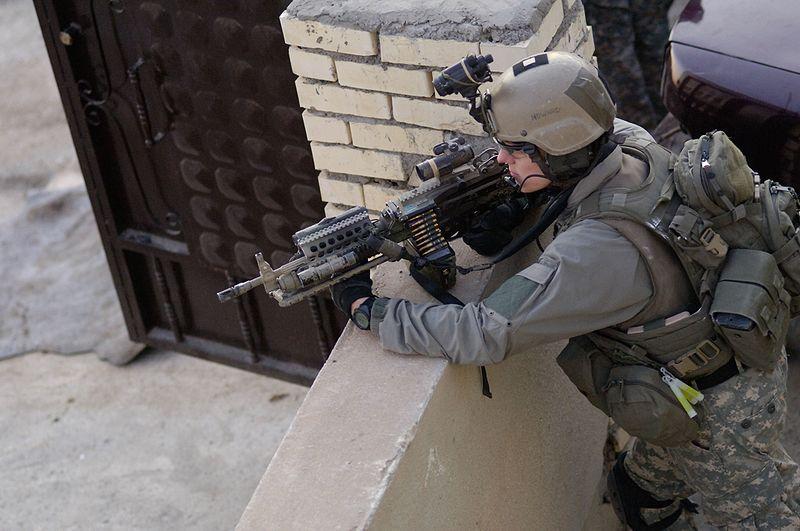
Once again, the United States called upon Rangers to serve their country during the Vietnam War. The 75th Infantry was reorganized on January 1, 1969, as a parent regiment under the Combat Arms Regimental System. Fifteen separate Ranger companies were formed due to this reorganization, thirteen of which served proudly in Vietnam until their inactivation on August 15, 1972.
In January 1974, General Creighton Abrams, Army Chief of Staff, directed the formation of a Ranger battalion. The 1st Battalion (Ranger), 75th Infantry, was activated and parachuted into Fort Stewart, Georgia, on July 1, 1974. The 2nd Battalion (Ranger), 75th Infantry, was activated on October 1, 1974.
The 3rd Battalion, 75th Infantry (Ranger), and Headquarters and Headquarters Company, 75th Infantry (Ranger), received their colors on October 3, 1984, at Fort Benning, Georgia. The 75th Ranger Regiment was officially designated in February 1986. The modern Ranger battalions were first called upon in 1980, with elements of the 1st Battalion, 75th Infantry (Ranger), participating in the Iranian hostage rescue attempts.
In October 1983, the 1st and 2nd Ranger Battalions spearheaded Operation Urgent Fury by conducting a daring low-level parachute assault to seize Point Salines Airfield and rescue American citizens at True Blue Medical Campus.
The entire 75th Ranger Regiment participated in Operation Just Cause. The Rangers spearheaded the action by conducting two significant operations. To neutralize Panamanian Defense Forces, the Rangers conducted simultaneous parachute assaults onto Torrijos/Tocumen International Airport, Rio Hato Airfield, and General Manuel Noriega’s beach house. The Rangers captured 1,014 enemy prisoners of war (EPW) and over 18,000 arms of various types.
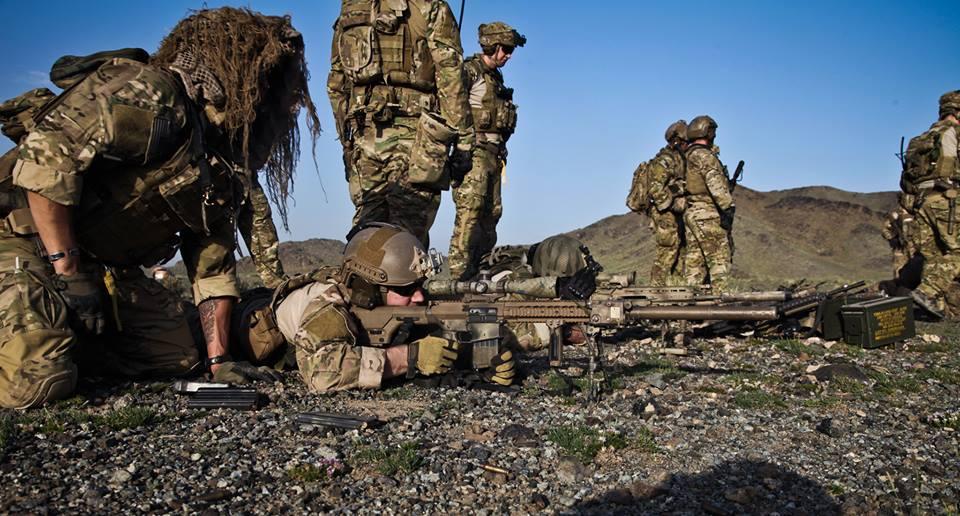
Elements of Company B, 1st Platoon Company A, 1st Battalion, 75th Ranger Regiment deployed to Saudi Arabia from February 12, 1991, to April 15, 1991, for Operation Desert Storm.
In August 1993, elements of the 3rd Battalion, 75th Ranger Regiment, deployed to Somalia to assist United Nations forces in restoring order to a chaotic and impoverished nation. On October 3, 1993, the Rangers conducted a daring daylight raid in collaboration with the 1st SFOD-D. For nearly 18 hours, the Rangers delivered devastating firepower, killing an estimated 600 Somalis in what many have called the fiercest ground combat since Vietnam.
On November 24, 2000, the 75th Ranger Regiment deployed the Regimental Reconnaissance Detachment (RRD) Team 2 and a command and control element to Kosovo in support of TF Falcon.
After the September 11, 2001, terrorist attacks, the Rangers were called upon to lead the Global War on Terrorism. On October 19, 2001, the 3rd Battalion and 75th Ranger Regiment spearheaded ground forces by conducting an airborne assault to seize Objective Rhino in Afghanistan in support of Operation Enduring Freedom. On March 28, 2003, the 3rd Battalion employed the first airborne assault in Iraq to take Objective Serpent in support of Operation Iraqi Freedom.
Due to the changing nature of warfare and the need for an agile and sustainable Ranger Force, the Regimental Special Troops Battalion (RSTB) was activated on July 17, 2006. The RSTB conducts sustainment, intelligence, reconnaissance, and maintenance missions previously accomplished by small detachments assigned to the Regimental headquarters and then attached to each of the three Ranger battalions.
The activation of the RSTB signifies a major milestone in transforming the Ranger Force from a unit designed for short-term “contingency missions” to continuous combat operations without loss in lethality or flexibility.
Today, Rangers from all four of its current Battalions continue to lead the way in the Global War on Terrorism. The 75th Ranger Regiment conducts sustained combat operations in multiple countries deploying from various locations in the United States, an unprecedented task for the Regiment.
Rangers continue to conduct combat operations with almost every deployed special operation force, conventional and coalition force supporting Operation Enduring Freedom and Operation Iraqi Freedom. The Ranger Regiment executes diverse operations, including airborne and air assaults into Afghanistan and Iraq, mounted infiltrations behind enemy lines, complex urban raids, and rescue operations.
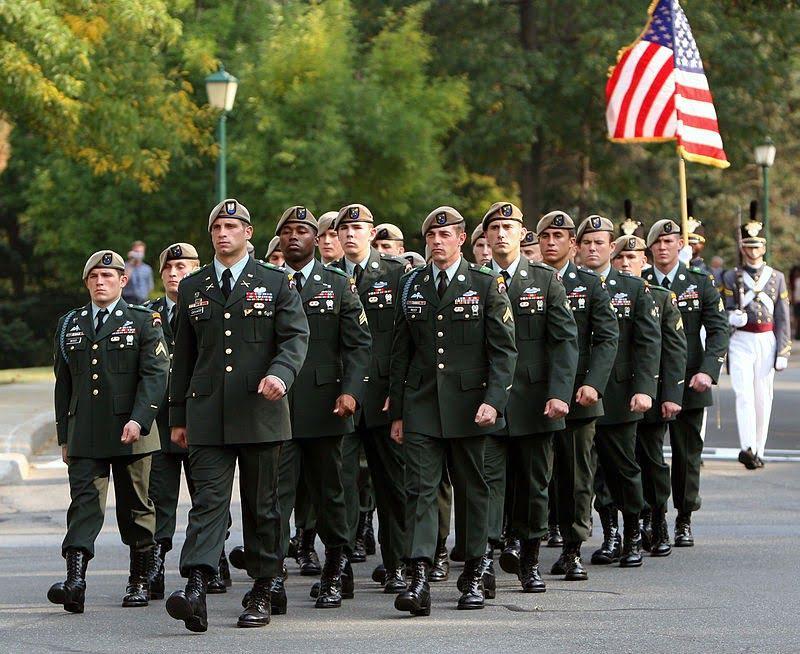
In addition to carrying out missions in support of the Global War on Terrorism, the 75th Ranger Regiment also conducts training exercises in the United States and abroad to prepare for potential future worldwide combat deployments on short notice. The Regiment also continues to actively recruit, evaluate and train the next generation of Rangers and Ranger leadership.
Mission
The 75th Ranger Regiment plays a critical role in the national defense by executing special operations or light infantry missions requiring a highly skilled, disciplined, and lethal force. The Regiment must be highly proficient in complex operations day and night, in all weather conditions, and across all terrain.
The 75th Ranger Regiment is also considered one of the world’s best light infantry fighting forces, focusing on raiding and assault missions deep in enemy territory. The Regiment is known for its ability to rapidly deploy and serve as a strike force, making it one of the most significant special operations combat elements in the U.S. Army. Using specialized equipment, operational techniques, and various modes of infiltration, the Regiment captures or neutralizes hostile forces with precision.
Being a ranger
Being a part of the 75th Ranger Regiment requires exceptional personal attributes and skills. Rangers are physically strong, mentally and morally sound, courageous, and disciplined. They possess a self-starter attitude, a thirst for adventure, and a relentless drive to succeed. They embody the mentality of a “more elite Soldier,” as the Ranger Creed states, and their demanding mission requirements demand nothing less.
Rangers are exemplary soldiers who use their minds and bodies to make sound judgments and reasoned decisions and never give up. They demonstrate discipline on and off duty, and their Regimental standards are unwavering.
When then-Army Chief of Staff General Creighton Abrams envisioned the modern Ranger force, he emphasized that professional unit excellence stems from individual Ranger personal excellence and character. He said, “wherever the battalion goes, it will be apparent that it is the best.” Members of the 75th Ranger Regiment live this charter personally and professionally daily.
Rangers Creed
Recognizing that I volunteered as a Ranger, fully knowing the hazards of my chosen profession. I will always endeavor to uphold the Rangers’ prestige, honor, and high esprit de corps.
Acknowledging that a Ranger is a more elite soldier who arrives at the cutting edge of battle by land, sea, or air. As a Ranger, I accept that my country expects me to move further, faster, and fight harder than any other soldier.
Never shall I fail my comrades. I will always keep myself mentally alert, physically strong, and morally straight, and I will shoulder more than my share of the tasks, whatever it may be one hundred percent, and then
some.
Gallantly will show the world that I am a specially selected and well-trained soldier. My courtesy to superior officers, neatness of dress, and care of equipment shall set an example for others to follow.
Energetically will I meet the enemies of my country? I shall defeat them on the battlefield, for I am better trained and will fight with all my might. Surrender is not a Ranger word; I will never leave a fallen comrade to fall into the hands of the enemy, and under no circumstances will I ever embarrass my country.
Readily will I display the intestinal fortitude required to fight on to the Ranger objective and complete the mission though I will be the lone survivor.
Training and selection
As a member of the 75th Ranger Regiment, you will be trained to overcome the most challenging obstacles and develop the confidence and skills to succeed in even the most impossible situations. Although the Ranger Regiment comprises a variety of Military Occupational Specialties, including highly skilled light infantrymen and world-class chefs, when you are accepted into the Regiment, you can be certain that you are surrounded by only the most professional and highly skilled Soldiers that the Army has to offer.
Regardless of your profession, the 75th Ranger Regiment trains all its members in the skills required to be an Army Ranger. Both Soldiers and officers undergo rigorous training before assignment that ensures that every Ranger is mentally and physically tough enough to uphold the standards of the Regiment and, upon joining their unit, can seamlessly integrate and operate as part of a cohesive Ranger force.
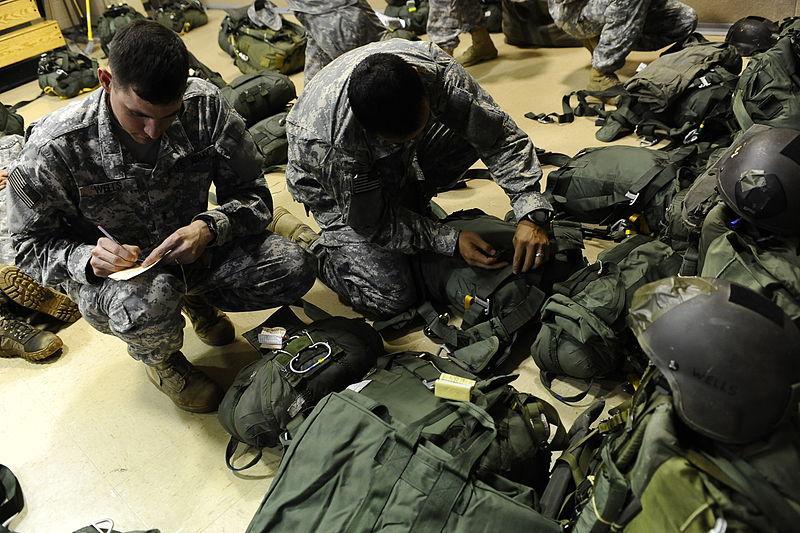
RANGER ASSESSMENT & SELECTION PROGRAM
The Ranger Assessment and Selection Program (RASP) is a mandatory evaluation for all prospective members of the 75th Ranger Regiment, from recruits to commanding officers. The program assesses individuals’ abilities and imparts the essential skills necessary to excel within the Regiment.
Modern soldiers participate in RASP after completing their initial Military Occupational Specialty training and graduating from the Army’s Parachutist Course. Enlisted and officer soldiers who have completed their first tour of duty and meet the Regiment’s recruitment qualifications may schedule a RASP date upon application and conditional acceptance.
Completing RASP demonstrates an individual’s aptitude to be a U.S. Army Ranger and grants entry into the 75th Ranger Regiment.
RANGER FIRST RESPONDER (RFR)
The Ranger First Responder is a mandatory training program for all Ranger Assessment and Selection Program (RASP) students. It continues to be taught to members of the ranger battalions. The course covers vital first-aid techniques and advanced combat lifesaving procedures. Regardless of one’s profession or background, this training equips all Rangers with the necessary skills to provide medical treatment and potentially save lives. The course has set a standard for excellence and is now the foundation for all Combat Lifesaver Courses taught throughout the Army.
RANGER LANGUAGE PROGRAM (RLP)
The Ranger Language Program is designed to equip Rangers with the knowledge of local languages and dialects when conducting operations in foreign environments. By completing this course, Rangers will gain proficiency in idioms commonly used in areas where the Regiment is currently operating. Those who excel in the course can further their language training by attending full-time Army language programs across the United States while still being a Regiment member.
U.S. ARMY RANGER SCHOOL
The U.S. Army Ranger School is a service school that focuses on imparting the fundamental principles of small-unit leadership and patrolling to its students. It is recognized as one of the Army’s most challenging and rigorous leadership development programs. Completing Ranger School is not a requirement for joining or being assigned to the 75th Ranger Regiment. Still, Regiment members who aspire to hold higher positions of responsibility are permitted to attend and earn the prestigious U.S. Army Ranger Tab. The Ranger Tab symbolizes distinction within military and civilian communities and is a testament to one’s proven ability to lead under the toughest conditions.
ARMY AND JOINT SERVICE SCHOOLS
The 75th Ranger Regiment provides its members exceptional access to a wide range of military schools, depending on their occupation and job requirements. These schools include but are not limited to Jumpmaster, Sniper, Pathfinder, Military Freefall, Scuba, Survival-Evasion-Resistance-Escape (SERE), and many more. Furthermore, members of the Regiment at all levels are given ample opportunities to participate in joint training and non-traditional military and civilian education programs.
